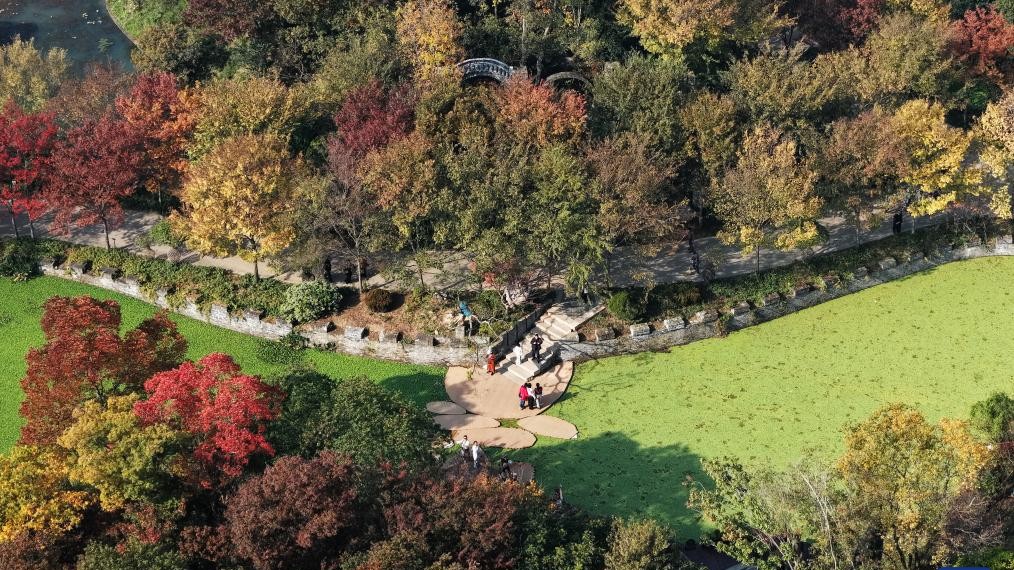Young inheritor revives ancient guardian cat craft in SW China
KUNMING, Nov. 17 (Xinhua) -- In an unassuming museum in Kunming, capital of southwest China's Yunnan Province, Zhang Hang was shaping a piece of clay into the figure of a cat known as Wamao, or roof cat, a traditional figurine once placed on rooftops believed to guard homes.
Zhang, 32, is an inheritor of the Kunming Wamao making technique and the founder of the Heart Chamber Wamao Museum.
Wamao, originating in Yunnan, combines practical design with folk beliefs. Traditionally mounted on eaves or lintels, it was believed to drive away evil spirits and bring peace to the household. In 2023, Wamao was listed as one of Yunnan's provincial intangible cultural heritage items.
Zhang first encountered Wamao in 2012, when he was studying folk art design at Yunnan Arts University. "I was drawn to its expressive artistic form," Zhang said. "I wanted to integrate its unconstrained style into modern design."
Since then, searching for old Wamao has become part of his daily life. He has wandered through old city markets and construction sites, from cities of Dali and Lijiang to the outskirts of Kunming, chasing traces of the clay guardians.
"As long as there is a Wamao, I would go for it," he said.
Through more than a decade of efforts, Zhang's museum now houses over 700 Wamaos. "The process of searching enhanced my understanding of the craft," he said. "Wamao is more than an ornament. It's a vessel of history, culture and people's hope for prosperity."
He recalls visiting an abandoned village where a Wamao perched above a broken doorway. "I tried to pry it off for preservation, but it was too solidly fixed," Zhang said. "When I returned, the house had been demolished, and the Wamao was gone."
Once proud sentinels of families, the Wamao have watched generations pass beneath them.
"Even the house shattered, the Wamao remains part of it," he said. "It comes from the earth, protects the home and eventually returns to the earth."
The experience, Zhang added, made him more respectful toward history and traditional craftsmanship. "Inheriting a craft is not only about skills, but also about understanding its cultural meaning," he said.
In 2019, Zhang founded the Wamao museum to promote the craft through exhibitions, hands-on classes, and cultural tours. Visitors can take part in Wamao-making workshops, Wamao placement ceremonies, and field trips to traditional villages.
"The placement and study tour help connect the intangible cultural heritage with modern life, while the workshops encourage creativity and understanding through practice," he said.
In his studio, Zhang mixes clay, shapes the cat's head and body, and then fires it in a kiln after drying. The belly of the cat is left hollow, with its mouth and tail connected, symbolizing the idea of "swallowing evil and releasing blessings."
Skilled artisans can complete a Wamao in a week, but Zhang said the true challenge lies in merging tradition with innovation.
"It sometimes takes a month to create one that feels right," he said. "The goal is to help this ancient craft find new meaning in modern society."
As urbanization changes the landscape of Kunming, many old houses have disappeared. Zhang hopes his work will help preserve the memory of the Wamao and its cultural spirit.
"As old houses crumble, I hope the chamber of my heart will serve as a new home for Wamao," he said.
Photos
Related Stories
- International delegates at Kunming forum highlight media's role in forging equity, enhancing mutual learning among civilizations
- Foreign journalists explore Kunming's blooming flower industry
- 23rd Kunming International Flower Expo attracts global enterprises
- Spring city of China enchants foreign media professionals
Copyright © 2025 People's Daily Online. All Rights Reserved.









